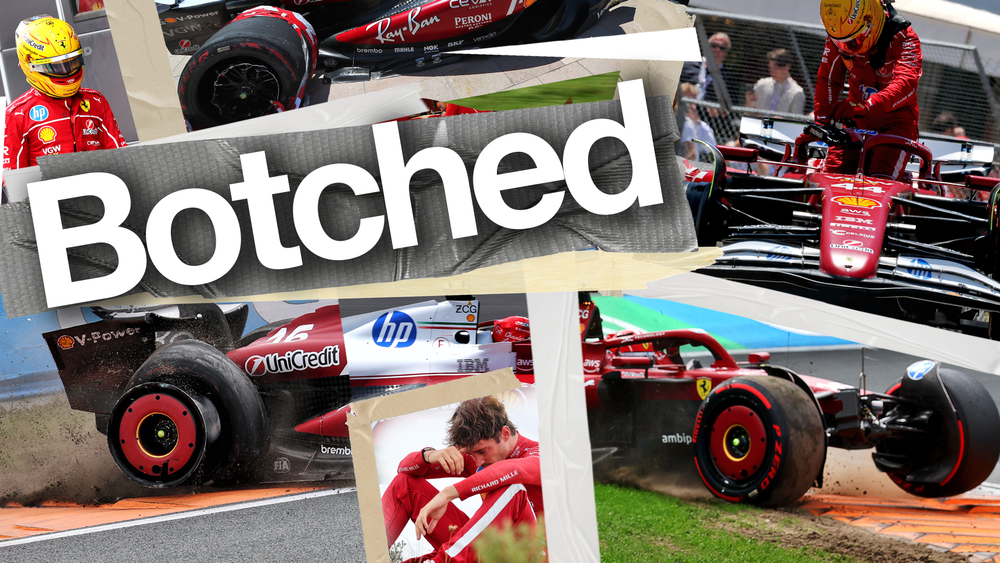Ferrari team boss Fred Vasseur is fond of pointing out how tight the field spread is in Formula 1 2025, and therefore how you execute individual weekends can be worth more in lap time than an aerodynamic upgrade during what he calls an ‘asymptotic’ period in the regulations where everyone is converging around similar solutions.
In reality, Ferrari has ploughed both furrows - and not especially fruitfully. A major summer update to the floor and suspension hasn’t elevated the Ferrari into an F1 car that looks like a proper victory contender.
Meanwhile, Ferrari is finding some familiar ways to underdeliver even with what it has at its disposal.
Swapping positions (badly)
Swapping positions for reasons of strategic divergence, or simply to allow a driver with more pace than their team-mate to attack a car in front, is fairly commonplace in F1 - as is the concept of handing that position back if said attack fails - but it’s something Ferrari has struggled to do cleanly since Lewis Hamilton arrived in the team.
In China, before both cars were disqualified for separate technical infringements, Hamilton suggested he let Leclerc past, before changing his mind on the timing of the swap and then being asked by Ferrari to do it anyway.
The way Formula One Management broadcast Ferrari’s radio exchange with Hamilton over this so angered team boss Fred Vasseur he said he would raise it with them, as Vasseur felt it made Hamilton seem like he was being needlessly belligerent.
But anyway that swap of positions, which eventually did happen, was less than smooth and so was the one that happened in Miami - where both drivers were unhappy with how the pitwall handled things.
Ferrari’s shilly-shallying in Miami led to Hamilton’s infamously sarcastic radio messages, where he suggested Ferrari’s engineers “have a tea break” while they worked out what to do, before asking them whether he should also let the Williams of Carlos Sainz past after being told to swap positions with Leclerc.
In Baku the problem was more with Hamilton’s own misjudgement, for which he later apologised.
He said he “got the message really late” and was “zoned in on the car in front of me” - so there’s also an element of Ferrari’s communication perhaps being a little slow, as well as Hamilton being a little too flat-footed in his response.
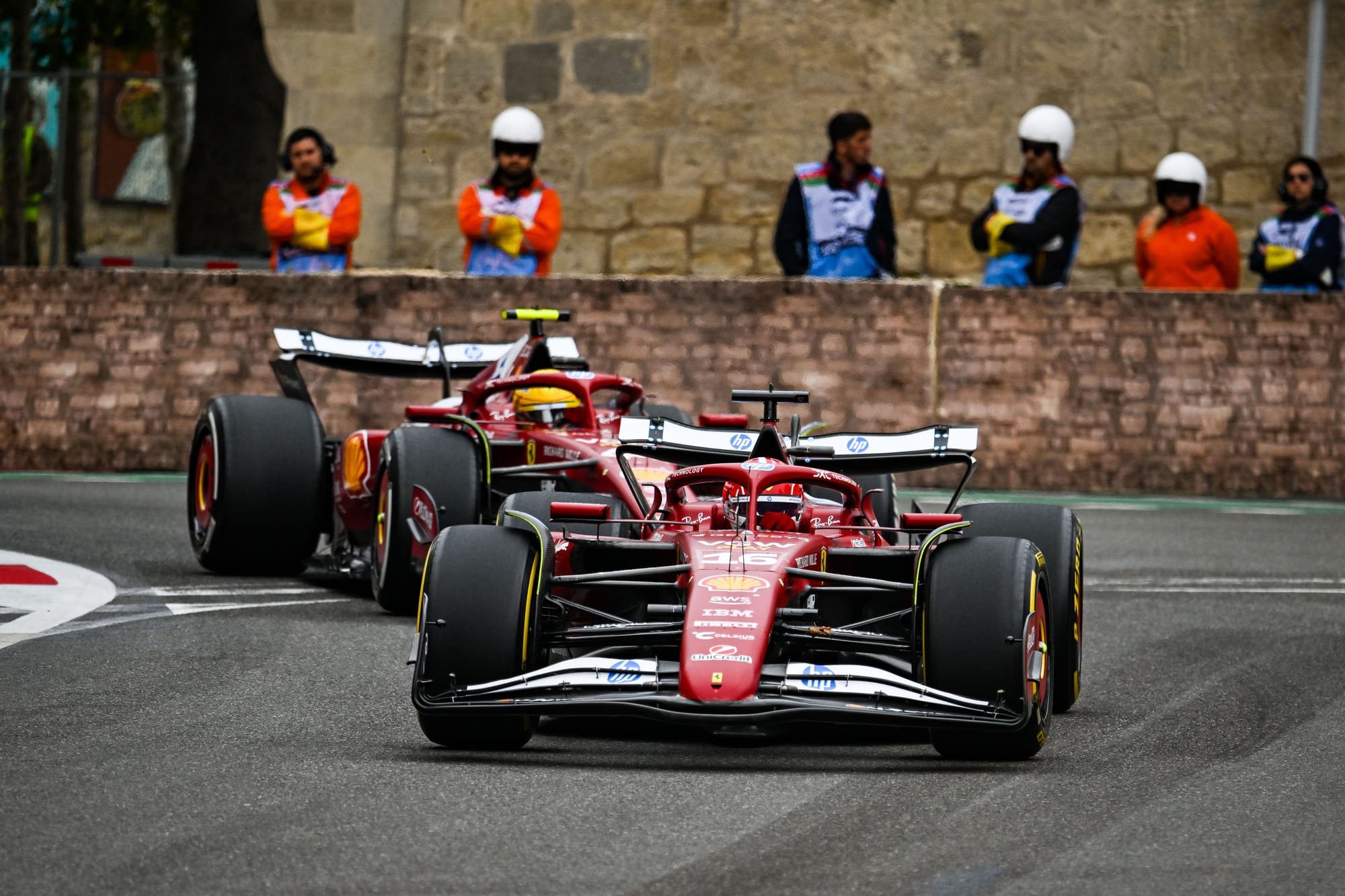
Although Leclerc wasn’t all that fussed about finishing eighth on a poor weekend for the team, saying “I really don’t mind”, it’s interesting that he still pointed to “rules not being respected” in terms of how Ferrari’s drivers are supposed to go racing.
This is just the latest incident of Leclerc playing nice and ultimately losing out, and Hamilton not doing a great job of complying with Ferrari’s instruction. But it’s also yet another example of Ferrari failing to orchestrate its race in the way it intends.
Poor execution and tyre use
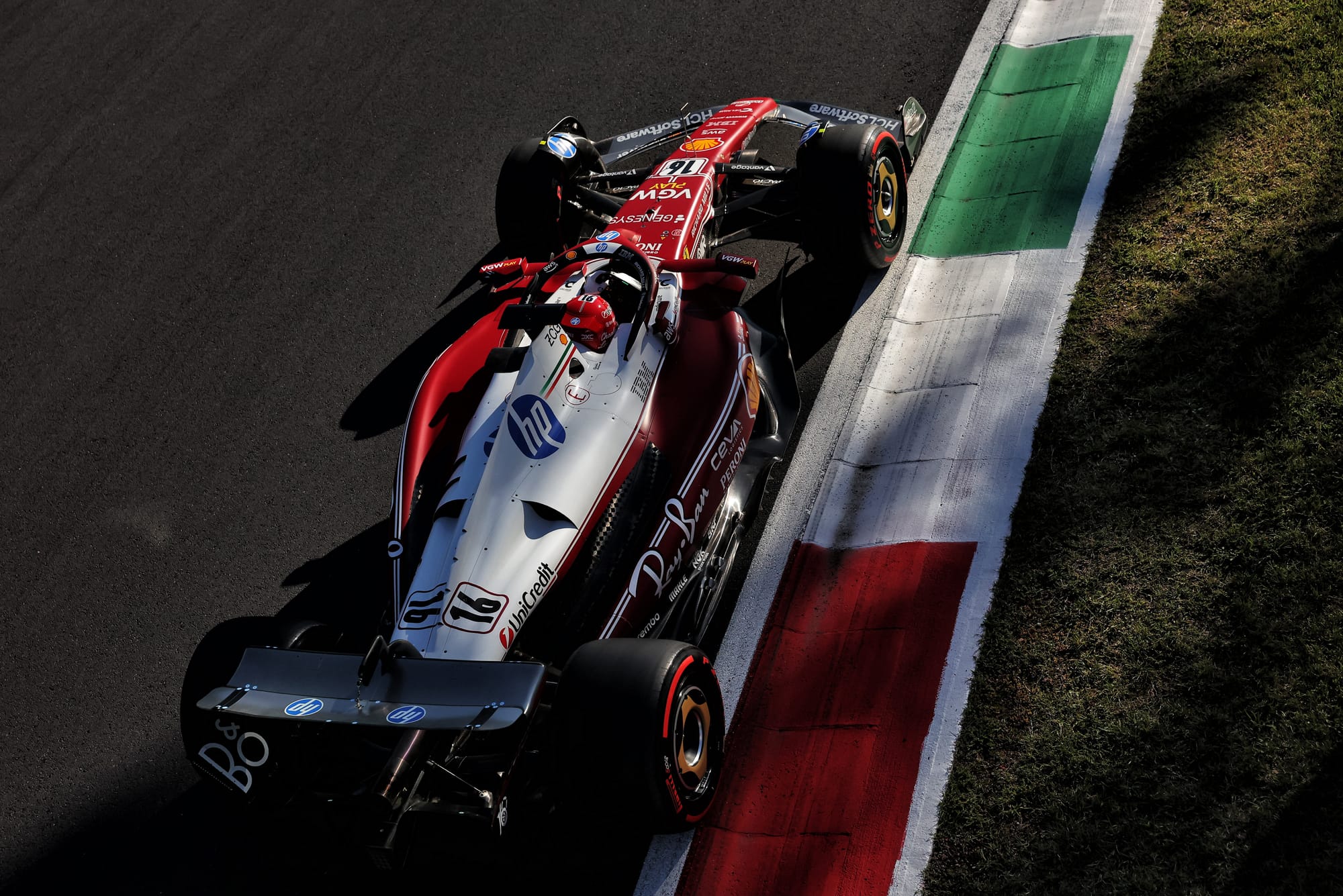
What we mean by ‘execution’ here is basically converting the pace you have in your car into the results it deserves - or not in the case of Ferrari.
It’s difficult to think of many races where Ferrari has achieved the optimal result - certainly with both cars - in 2025.
Probably the best example is Austria, where Leclerc and Hamilton finished a comfortable 3rd and 4th behind the dominant McLarens, helped by Kimi Antonelli wiping out Max Verstappen’s Red Bull on lap one.
Otherwise, this has been a season characterised mostly by a fundamental lack of performance, or missed opportunity. Baku is just the latest example falling into the latter category.
Ferrari finished Friday practice 1-2, with a near-half a second advantage over the field. That was never likely to translate precisely to qualifying, with other teams naturally picking up their pace, but for one Ferrari to fall in Q2 and the other to end up only 10th on the grid represented a major underachievement.
And a crucial one too, because that race was largely defined by grid position.
“The best comparison we have was Norris,” Vasseur said. “Started the row in front of us, and he finished in front of Lewis. He was P7, Lewis was P12, and Lewis finished into the gearbox of Norris.
“I think it's difficult to overtake. The delta pace between the cars is very marginal and strangely or not, Baku is not the easiest place to overtake, because as soon as you have the small wings, it's a bit the same in Monza when you have the small wings, the DRS effect is much smaller also, and with this one with the corner before the start straight it's difficult.”
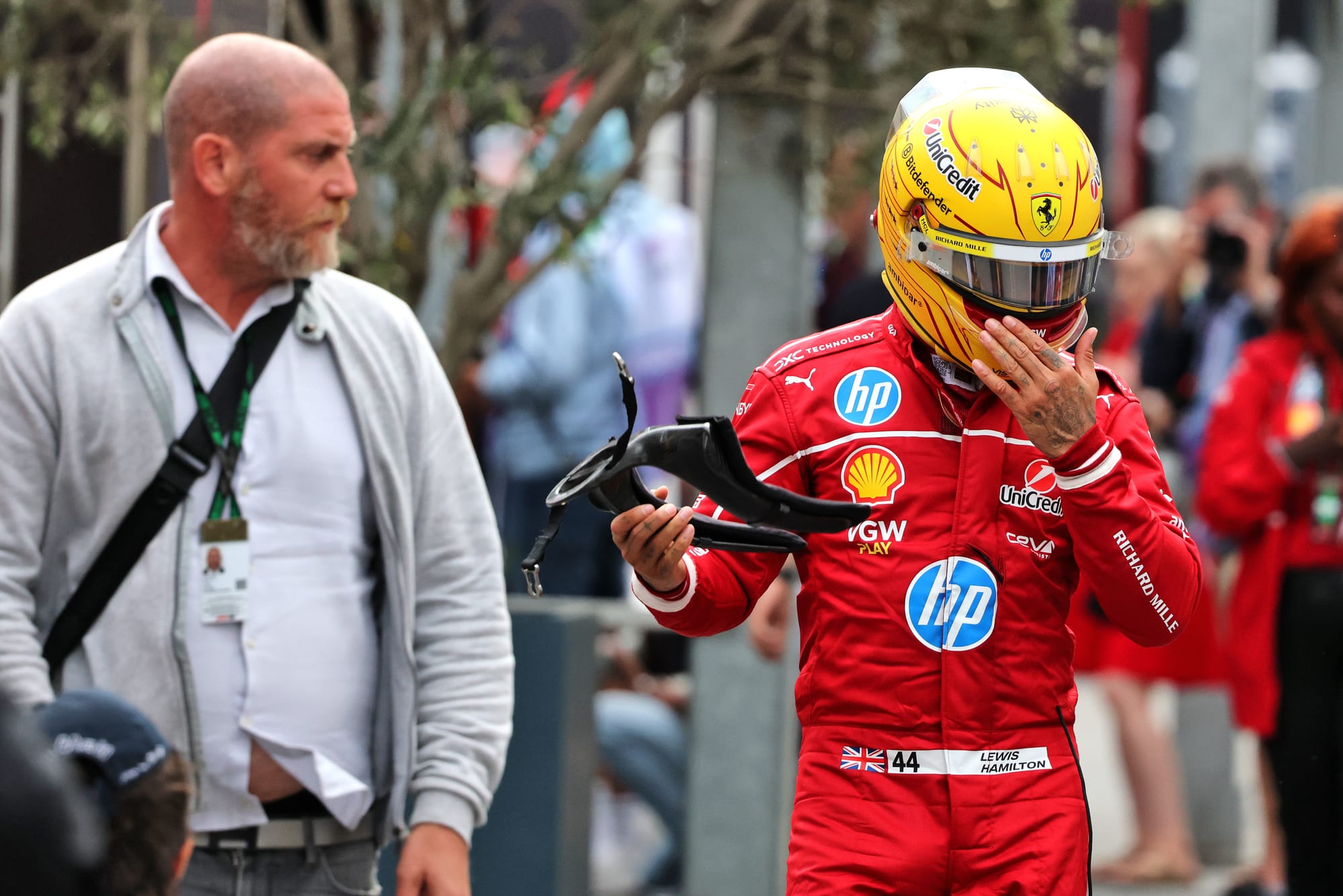
From what the drivers both said about wanting each other’s tyre compounds at the crucial moments of qualifying - Hamilton wanting the medium and getting the soft at the end of Q2, Leclerc getting the medium but wanting the soft in Q3 - it suggests Ferrari misread the change of conditions from Friday to Saturday and also became muddled about which of the C6 and C5 compounds was actually the better tyre for their car.
The situation wasn’t helped by Leclerc going off in front of Hamilton in Q2, meaning Hamilton’s soft tyres had lost peak performance for his crucial lap, but as Hamilton pointed out: there’s no point saving sets of what you think is the quicker tyre, in his case the medium, for Q3 if you then don’t make it through to Q3…
Had he progressed as he should have done, Hamilton felt the Ferrari was good enough to fight for pole.
For Leclerc, who did make it to Q3, the problem was the opposite to Hamilton - he felt the soft tyre was working really well in Q1, where he lapped just over a tenth off the pace, while switching to the medium for Q3 meant Ferrari took a backward step because he couldn’t get them fired up.
Leclerc said he was “pushing like crazy” yet was still “seven or eight tenths off” the pace before he buried his car in the wall at Turn 15.
Vasseur didn’t really offer a concrete explanation, other than to suggest Ferrari was a bit caught out by the shift in weather from Friday to Saturday - windier and colder - and perhaps overestimated how easy it would be to fire up the medium tyre for qualifying.
“We had the car and the drivers able to fight for P1 all the free practice, and we finished P10 and P12,” he said.
“It's not a matter of potential. I think we did our best Friday by far of the season, by far because we know exactly the conditions where we are operating the car, and we were in a very good shape, very consistent.
“On one lap pace we were there, with the two cars. And it was a very, very good Friday. Then the condition changed.”
Pirelli claimed the C5 medium was roughly two tenths slower than the C6 soft around Baku, though Hamilton indicated Ferrari felt the C5 was three tenths faster than the soft, so therein already lies an interesting discrepancy between the pace that should be available from the tyres and what Ferrari figured was actually the case.
That said, they weren’t alone in thinking the C6 was no good - Verstappen thinks it’s generally a terrible compound that doesn’t do what it’s supposed to and should be binned entirely, and there are reports circulating that Pirelli has already quietly dropped it for upcoming races in Singapore and Las Vegas.
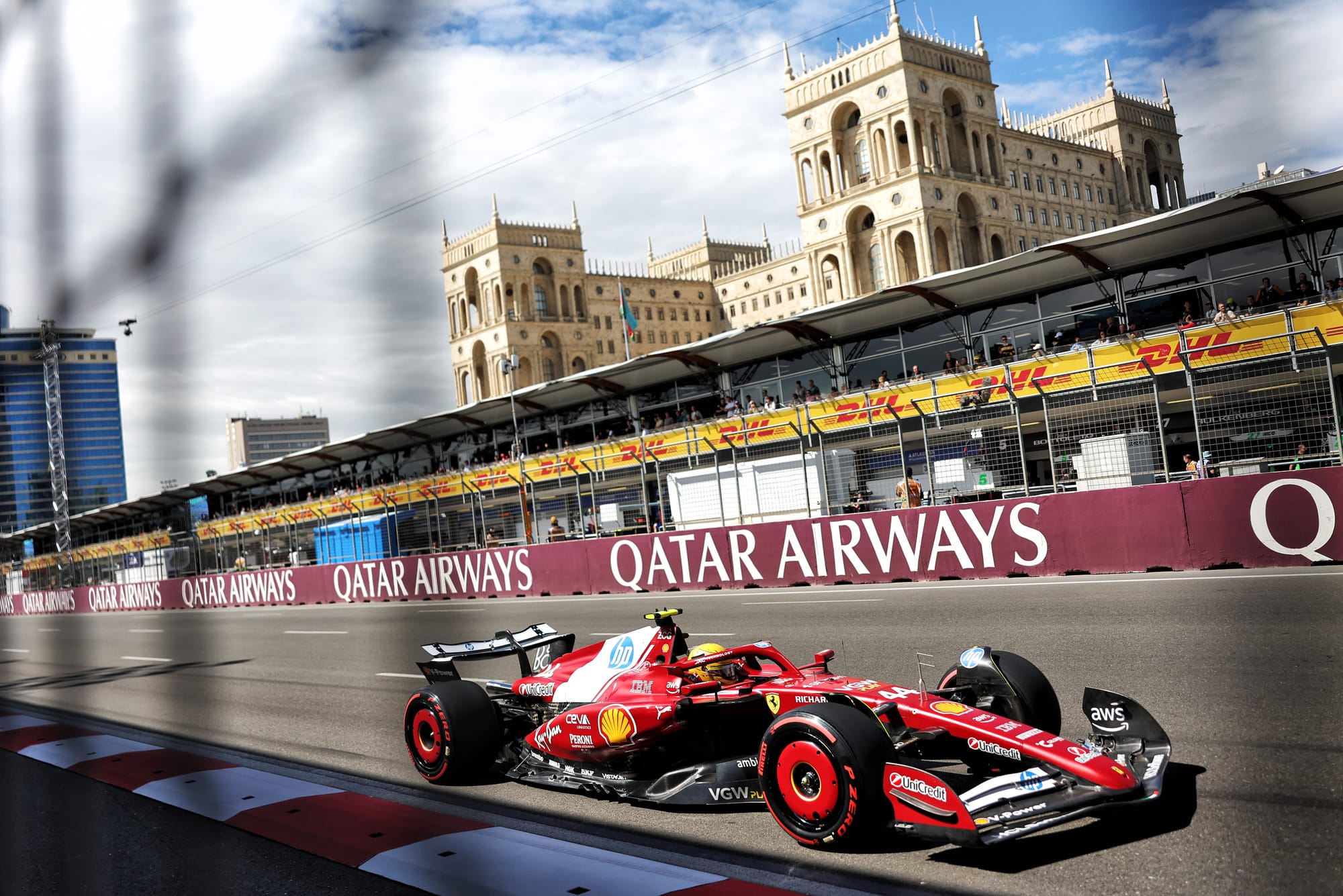
Ferrari has previously worked hard on making its car kinder to the tyres over a race distance, which generally comes at the expense of tyre warm-up.
There is almost no doubt Mercedes and Red Bull benefitted from Baku being a relatively low-degradation event where firing up the tyres in qualifying was absolutely key to defining the weekend.
Vasseur thinks the top four teams can be split into “two groups: McLaren and us better when it's a bit hotter, and Mercedes and the Red Bull a bit better when it's colder.”
Even if that’s true, it’s fair to say across the balance of the season Ferrari has done nowhere near as good a job as McLaren has of utilising any advantage it has in the hotter races, where managing thermal degradation is key, otherwise Ferrari wouldn’t be sitting third in the championship with a 337-point disadvantage to McLaren.
The medium tyre clearly needed additional laps to get it working specifically in Baku - unless it was scrubbed first, something Vasseur pointed out Williams did with the set Carlos Sainz used to qualify second.
Williams went on to score a podium, which suggests at least that was possible for Ferrari had they qualified better. Williams simply executed Sainz’s weekend to a much higher level than Ferrari did.
As Vasseur points out, the Ferrari has been quick enough since the summer break to have scored much better results than it has managed across the three races at Zandvoort, Monza and Baku, and the fact it hasn’t has a lot to do with not executing the crucial sessions correctly.
“We need to do a better job collectively,” he admitted. “The last couple of weekends, if you consider this one, Monza, even Zandvoort, the pace was good.
“Now, one thing is to have the potential, the other one is to deliver - and we need on the execution to do the job.”
Driver errors

Leclerc would be among most experts’ picks for the top-five drivers currently racing in F1, and Hamilton - even if he’s perhaps not among that group at present while he adapts to life at Ferrari - remains statistically the best F1 driver there’s ever been.
But neither has been at their absolute best this season. Hamilton’s year has generally been very up and down. Creating a championship table from The Race’s F1 driver rankings, by awarding points to each driver based on their individual ranking at each grand prix so far, shows Hamilton only 14th out of 21 in the standings.
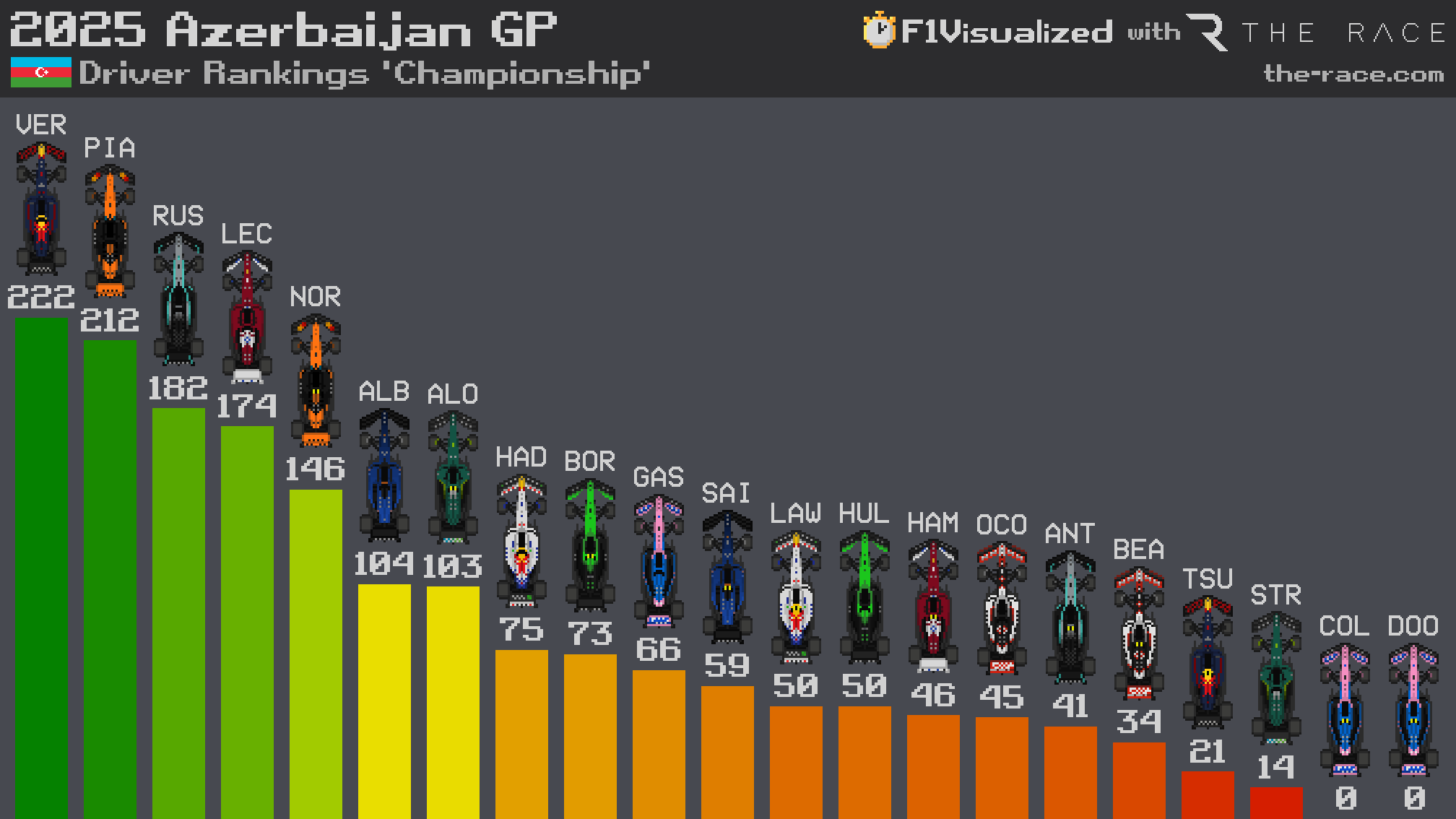
Only a few races ago, Hamilton was declaring himself “useless” and suggesting Ferrari might need to replace him. He’s picked up his form since the summer break, pointing to an improved process on his side of the garage.
This appears to revolve around trying fewer setup experiments through the practice sessions and also working harder to adapt himself to the specific behaviours of the Ferrari, rather than trying to get it to do things he has greater muscle memory of from his long spell at Mercedes.
But he committed a speeding offence in Zandvoort that compromised his next race at Monza, and he’s still yet to finish on the podium in a grand prix this season.
Leclerc has managed to do that five times already in 2025, but he’s also had some bad weekends compromised by mistakes, like his disastrous British Grand Prix, and also Baku, where he was especially furious with himself - beyond simply the costly error he made in Q3, a mistake he readily admits “I shouldn’t do”.
“I did change my approach in terms of set-up,” Leclerc revealed after his race to ninth in Baku. “And considering how strong I was in the past, I'm not sure what made me think this was a good idea.”
Leclerc’s crash compounded that wrong set-up direction, which he says lost him the rhythm you need to be quick around such an uncompromising street circuit - where of course he has been supreme in the past, setting four consecutive poles from 2021-24.
He says he unpicked this wrong direction in time for qualifying, but then didn’t execute his session correctly.
“At the end of the day the only thing I can do is to be harsh with myself,” he said, “not having performed the way I should have in qualifying, obviously with the mistake in Q3.
“It's been a very strong season so far, but this weekend I haven't been on the level where I should be, and I paid the price of it.”
Maybe victory was anyway beyond reach given how fast Red Bull and Verstappen were ultimately, but Leclerc should certainly have been aiming to match the second place he took in Azerbaijan in 2024. That he didn’t was as much down to him as it was to Ferrari being underwhelming.
Underlying car problems
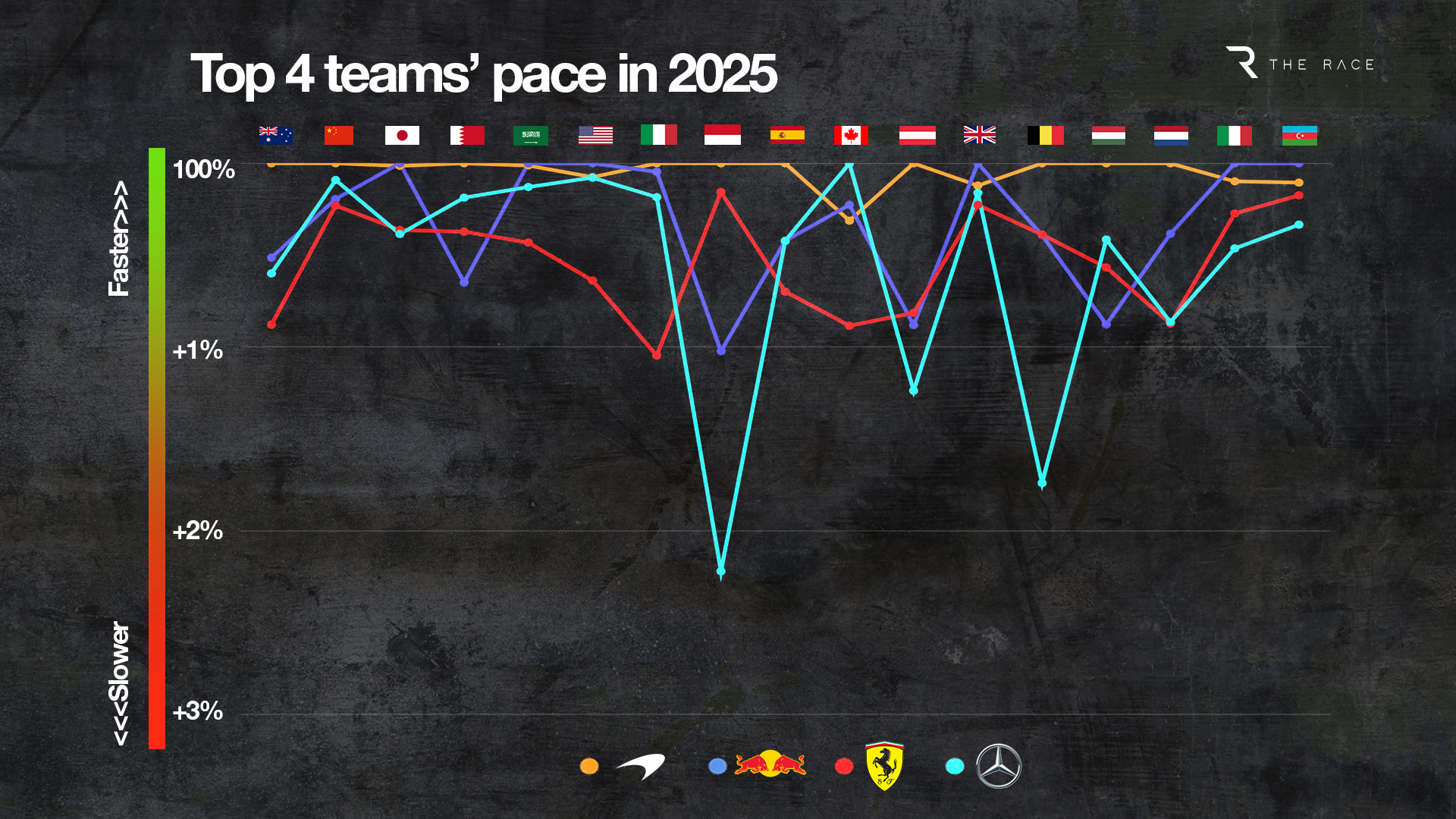
This season has been characterised by an underwhelming base level of car performance that Ferrari has struggled to correct.
Ferrari denies that its car is ride height compromised, or that the revised rear suspension it introduced at Spa, following a major floor upgrade a few races earlier in Austria, was designed to address this.
But we know from what happened in Hungary, where Leclerc set a surprise pole but slipped back to fourth in the race, that Ferrari was almost certainly trying to run its car as low as it could to access more performance, then trying to manage the consequent plank wear by raising tyre pressures and adjusting setup parameters at the pitstops.
We know on other occasions this season the Ferrari drivers have been asked to lift off the throttle and coast in high-speed sections - not for the common reason of fuel efficiency, but because doing so will lighten the aerodynamic load, raise the ride height and protect the plank.
Meanwhile, all the top teams have spoken about focusing on the new rules of 2026 while trying to expend as little resource as possible on their 2025 cars but, such as been the closing up of the competitive order during this final year of the current regulations, no one has been able to back off entirely - and indeed Red Bull’s Monza floor update suggests it’s still pushing hard in the hope of pressuring McLaren.
This is something you sense Hamilton wishes Ferrari would pursue too.
“McLaren has been ahead all year,” he said. “We haven't made any steps of improvement - so we're a good couple of steps behind.
“Red Bull took an upgraded floor, I think, in the last race, so they've now picked up their pace. They're probably going to win more races moving forwards.
“If we qualify better, we're going to be in a much better position to race.
“I would give anything for an upgrade, but obviously we don't have that, because we've been focussed on next year's car.
“So... we just have to do better in optimising and execution.”
Ferrari has switched off 2025 development completely since mid-June, because it’s already admitted defeat in the world championship, and currently there are no plans to spend any of the remainder of its capped budget on CFD-only developments (which don’t require windtunnel time) of the kind which powered the new floor on the Red Bull that Hamilton referred to.
Only track-specific components will be introduced by Ferrari from now to the end of the season - which ostensibly means minor fiddling with wing chords and brake ducts.
Ferrari’s proper upgrades have anyway not been wholly effective, and it could be the new flexibility limits introduced this season have narrowed the car’s setup window even further.
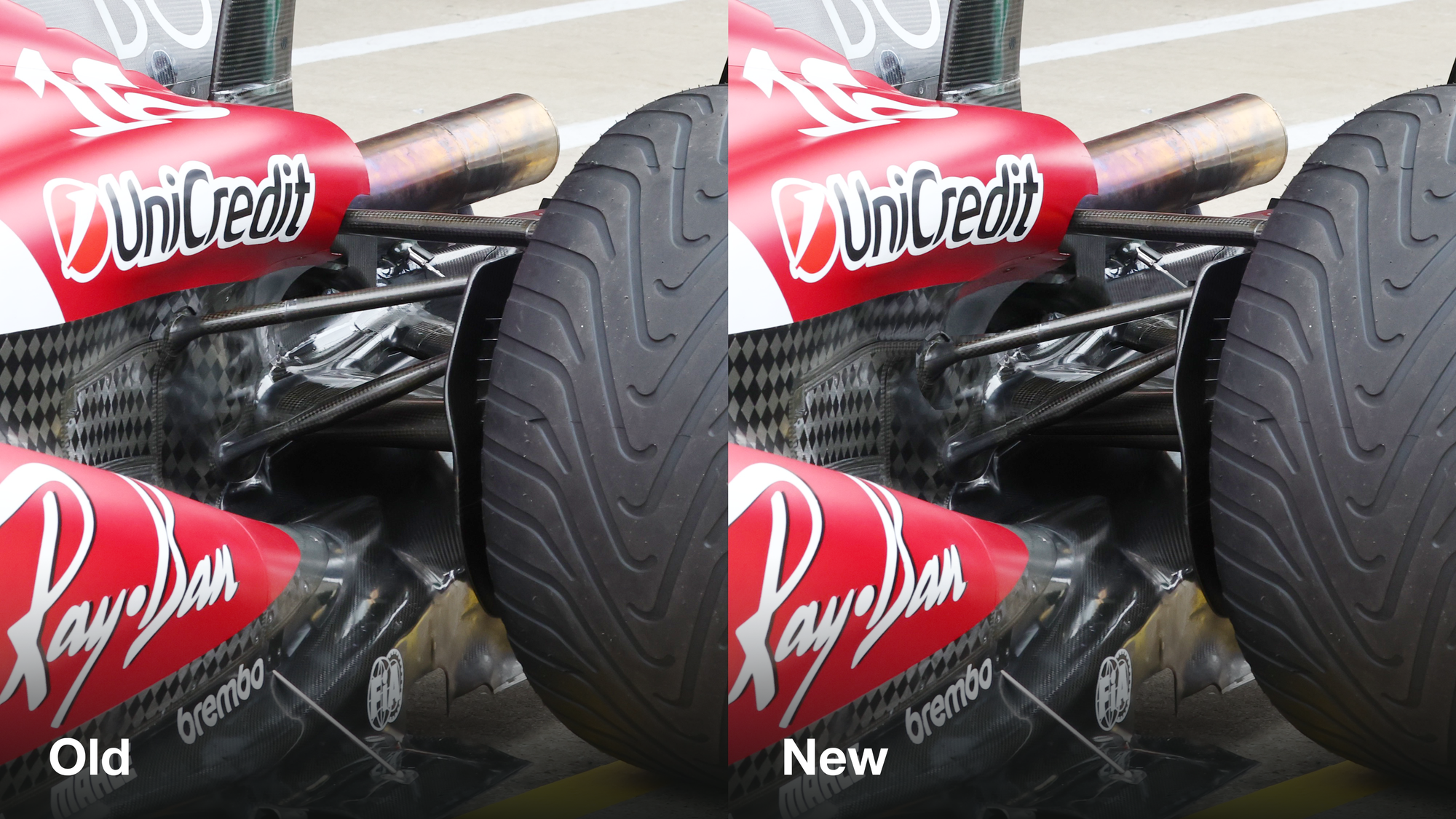
The new rear suspension in conjunction with some brake material changes introduced earlier in 2025 also seems to have made the car more difficult to optimise around the brakes, as well as unsettling the drivers - Hamilton in particular.
Ferrari is currently the only one of the top four teams not to have won a race, except for the China sprint, and there are no clear-cut opportunities among the final seven events where you’d argue this version of Ferrari is a nailed-on favourite - in the way perhaps Mercedes would be in Vegas.
The level of McLaren’s superiority this year has undoubtedly surprised its rivals, but it’s also fair to say Ferrari’s overall level of performance has been surprisingly underwhelming.
Nevertheless, even when you don’t have the performance you expect it’s vital to maximise what you do have - and that’s where Ferrari has also disappointed.
The muddled execution in both qualifying and the race in Baku are just the latest examples of a team that just doesn’t appear to be firing on all cylinders.


